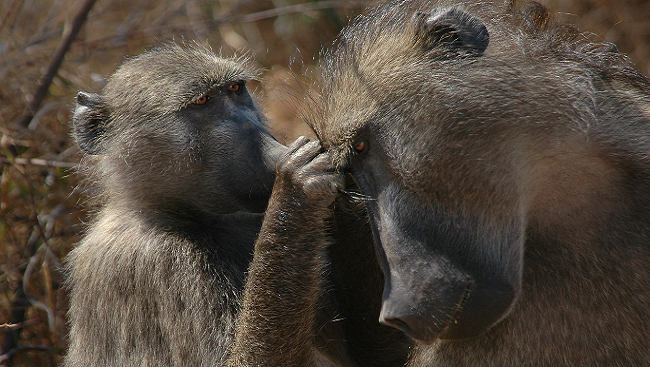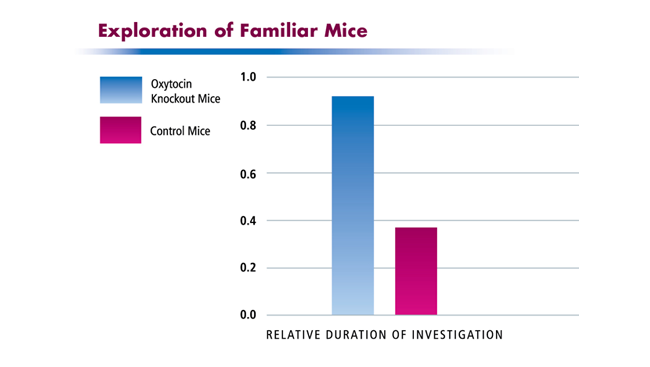Group Think: The Science of the Social Brain
- Published8 Nov 2012
- Reviewed8 Nov 2012
- Author Marilyn Fenichel
- Source BrainFacts/SfN

Photo by T. Adams, photographer, used under Creative Commons license.
Understanding how people process social information is an important area of research for social neuroscientists. Brain imaging studies show people respond differently to other members of their own social group than to outsiders. This research supports the importance of social information in how people interact with the world around them.
Other research indicates social interactions may be rewarding, especially among women. Neuroscientists used functional magnetic resonance imaging (fMRI) to scan women’s brains while they played a collaborative game. When players cooperated, the researchers observed activation in parts of the brain related to reward — the nucleus accumbens, caudate nucleus, ventromedial frontal/orbitofrontal cortex, and the rostral anterior cingulate cortex. Later studies conducted with men had a slightly different result. Their reward pathways were more activated when they had an opportunity to punish players who were cheating. Similar research is examining the benefits and biological underpinnings of the social concepts of generosity, empathy, and social justice both in people and in animals.
The Social Hormone
Brain chemistry plays a role in modifying social behaviors. Researchers found that the hormone oxytocin is important in some social behaviors. Released by the pituitary gland, oxytocin has long been known for its involvement in childbirth and in helping mothers bond with their babies. Its impact on social behaviors, however, has only recently become apparent.
One study found mice unable to produce oxytocin could no longer recognize mice they had previously encountered. But when oxytocin was injected into the amygdala, the part of the brain responsible for processing this kind of information, the mice’s ability to engage socially was restored. Another study reported children with autism have decreased levels of oxytocin. Although the causes of autism are varied and complex, this suggests oxytocin may play a role.
Building on this work, other researchers showed oxytocin increased trust in a financial situation. In a game that tested trust, participants who sniffed oxytocin invested more money than those who sniffed an inactive substance. Furthermore, brain imaging studies suggest that even after their trust had been violated, investors who had sniffed oxytocin showed no signs of fear, and they did not decrease their investments. Economic decisions, decisions made by individuals in a social setting, and decisions made by groups are all studied by social neuroscientists.

Courtesy, with permission: Ferguson, et al. The Journal of Neuroscience, 2001
Stress in Everyday Life
Neuroscientists also monitor the effects of social constructs, such as socioeconomic status, and chronic stress. Research has shown that living in a state of chronic stress can impair the hippocampus, which is key for learning and memory. Chronic stress also has been linked to an array of diseases, including high blood pressure, hardening of the arteries, and abdominal disorders.
Studies with savanna baboons are helping researchers better understand social stress. Like people, baboons live in social groups and spend plenty of time interacting. Many of these interactions generate stress, much of it built around competition for social rank.
In general, among baboons in a stable dominance hierarchy, lower ranked animals are more stressed, indicated by increased levels of stress hormones. And while higher ranked baboons are generally more relaxed than those ranked below them, alpha males are the exception — they are markedly more stressed than their peers.
Rank is not the only factor that determines stress levels in baboons. Personality matters as well. Those that are isolated or perceive even benign social activities, such as a rival sleeping nearby, as a threat are more stressed — and less healthy overall.
Social neuroscience studies like these are helping to uncover why we behave the way we do. Although still a relatively new field, social neuroscience is illustrating the inextricable connection between the brain, the mind, interpersonal interactions, and the body.
CONTENT PROVIDED BY
BrainFacts/SfN
Also In Archives
Trending
Popular articles on BrainFacts.org


















